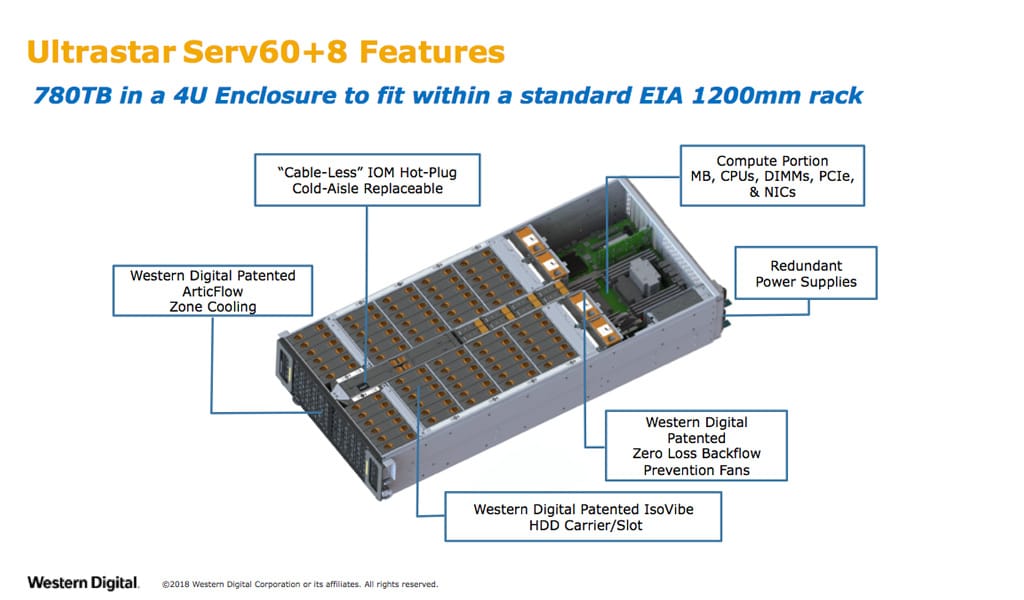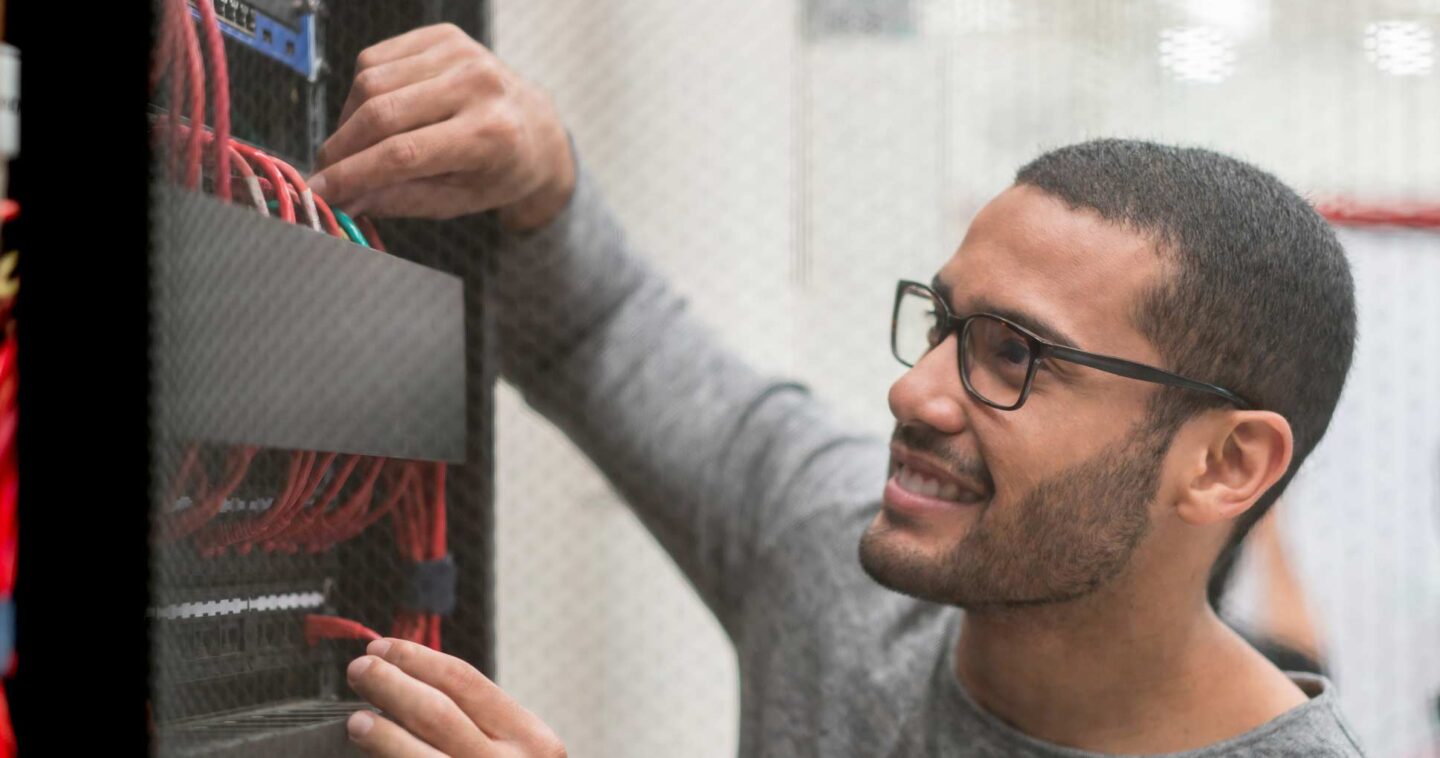How Symbiotics Design™ Drives Platforms Innovation
A few weeks ago, Western Digital’s Data Center Systems (DCS) business unit announced several new systems and platform offerings and capabilities to help our customers more efficiently build, scale, and manage their workloads. These solutions are made possible by our unique Symbiotics Design approach; today I’d like to take a deeper look at our newest storage server offering that was announced and the unique technologies and customer benefits enabled through our Symbiotics Design approach.
Symbiotics Design in Storage Server Platforms
Working closely with the world’s largest OEMs, internet giants and enterprises – for over 40 years – we have enormous experience integrating storage devices into higher-level platforms and systems. We understand the hardware and firmware/software interaction, influences and complexities that are at play when our HDDs and SSDs are qualified for installation in disk shelves or platforms.
[Tweet “When you know the characteristics of your #data #storage device, you can design optimal enclosures”]
From silicon and magnetic recording technologies to systems, we design, develop and manufacture components that go into our entire portfolio of products, which then gives us the ability to fine tune and optimize everything through to the final product. Another benefit of being our own designer and manufacturer of materials, components, devices, platforms and systems is we are able to rigorously test each product ourselves to provide industry-leading levels of quality, customization and responsiveness. (Learn more here.)
When it comes to storage server platforms, our ability to design solutions knowing the vibrational sensitivities and thermal characteristics of our storage devices enables us to design enclosures that reduce risks and maximize density, reliability, and device longevity.
Here are two great examples of some of the innovations we’ve been able to bring to market with this approach:
IsoVibeTM – Higher Density, Reliability and Performance Through Vibration Reduction
In traditional enclosures, as more hard drives are added, more vibration is generated. These vibrations impact not only the individual drives, but also neighboring drives and the enclosure. This could lead to an environment where the head won’t be able to settle on the data you’re trying to read and will ultimately lead to reduced performance. As data density, measured in Tracks Per Inch (TPI), on disk platters continues to increase, reducing vibration to the drives becomes critical.

IsoVibe is our unique vibration-dampening design that not only keeps each drive running reliably and at a high level – but also keeps it from interfering with its neighbor. Our IsoVibe has been measured to reduce vibration to the drive by up to 63% when compared to traditional drive mounts.
Our ability to design the storage server platform knowing the vibrational sensitivities and characteristics of our devices enables us to design enclosures with shock and vibration control to support the extremely tight tolerances of high track density drives. This – along with vibration-isolated fans – helps to maximize density, reliability, and performance of individual drives and the entire enclosure.
ArcticFlow TM – Optimized Cooling Design

Power consumption – of devices, storage platforms and Data Centers – has become a critical issue for today’s IT Infrastructure managers. Reducing the power needed to operate a storage server platform provides many immediate benefits – for example, reducing energy costs and improving reliability.
Putting dozens of drives into an enclosure creates particular power and heat challenges that can affect drive reliability. Even our SSDs, which were designed with exceptional heat efficiency through the deep knowledge of the heat dissipation properties of our NAND, can face overheating challenges if a storage platform cannot cool the air environment.
Understanding how to optimize the cooling of devices in a storage server platforms, Western Digital’s patented ArcticFlow design introduces cool air into the center of the chassis – enabling all drives to operate at lower and more consistent temperatures than traditional platform designs. This results in reduced cooling requirements (lower fan speeds, reduced vibration, lower power consumption) and ultimately higher reliability.
Ultrastar Serv60+8 Hybrid Storage Server
For the past few years, we have been shipping densely packed, rack-mount platforms to our OEMs, service providers and systems integrators who see a tremendous advantage in a pre-qualified, pre-tested, supported configuration that they can build into their systems.
Our Ultrastar Data and Ultrastar Serv family of platforms are purpose-built for private cloud, software-defined-storage (SDS) and cost-sensitive environments. New to the family is the Ultrastar Serv60+8 Hybrid Storage Server, a high-capacity, performance-optimized storage server, designed for SDS archive, backup, media streaming, content repositories, and remote office and private-cloud environments.

The Ultrastar Serv60+8 has dual high-performance Intel Xeon® Scalable Processor-based CPUs to deliver the performance to manage demanding workloads in Software- Defined Storage (SDS) environments. The Ultrastar 60+8 provides 60 drive slots for HDDs (3.5”) plus an additional 8 drives slots dedicated for SSDs (2.5”). Capable of supporting over 780TB[1] in the server, it delivers high density (up to 195TB per rack unit). With a choice of CPUs, memory and drives, it provides the flexibility to balance performance with cost.
Our high capacity, helium-sealed HelioSeal® HDDs ensure cool running, quiet operation and high reliability for big data. Using SAS, SATA or NVMe SSDs in the “+8” slots can provide a fast data tier for additional performance.
The Ultrastar Serv60+8 is another great example of the transformation of the Western Digital portfolio across edge, core and cloud environments and the technology leadership of our unique capabilities through the Symbiotics Design approach.
[1] One MB is equal to one million bytes, one GB is equal to one billion bytes and one TB equals 1,000GB (one trillion bytes) when referring to storage capacity. Accessible capacity will vary from the stated capacity due to formatting and partitioning of the hard drives, the operating system and other factors.




